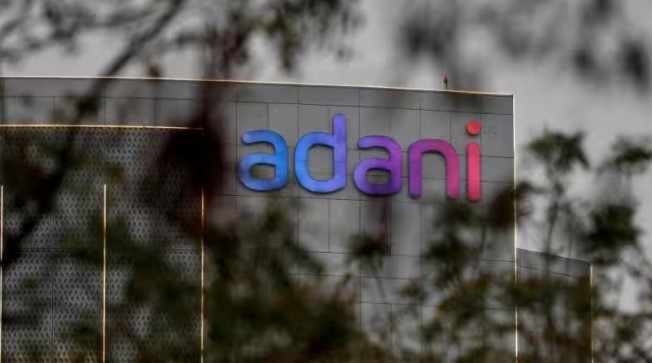Adani to Invest Rs 2 Trillion in Green Energy by 2030
Adani Green Energy plans to invest Rs 2 trillion by 2030 to achieve a 50 GW capacity and aims for an Ebitda of Rs 50,000 crore. The company’s financing is 75% debt and 25% equity. Sagar Adani, Executive Director, confirmed $7 billion in debt funding from domestic and international lenders. Adani Green is also expanding into pumped-storage hydropower, targeting 5 GW in five years.
Source: Financial Express
Satellite-Based Tolling to Boost Revenues by Rs 10,000 Crore: Gadkari
India’s shift to satellite-based tolling could increase annual toll revenues by Rs 10,000 crore, according to Road Transport and Highways Minister Nitin Gadkari. The new Global Navigation Satellite System (GNSS) aims to address leakages seen with Fastag, ensuring 99% toll collection. With 7.2 crore four-wheelers and 4 crore trucks, the system will initially cover 5000 km and expand to 2000 km within three months, targeting nationwide implementation in 24 months.
Source: Financial Express
Union Budget 2024: New Approach with No Disinvestment Targets
The Indian government will not set specific disinvestment targets in the upcoming Union Budget, continuing the strategy from the last interim budget. Instead, disinvestment will be included under capital receipts. This shift aims to create value rather than focusing on targets, as seen with ongoing IDBI and HLL Lifecare transactions. The Public Sector Enterprises policy under Aatmanirbhar Bharat will minimize government presence in strategic and non-strategic sectors.
Source: Business Today
ICICI Bank Hits $100-Billion Market Cap Milestone
ICICI Bank’s market capitalization surpassed $100 billion for the first time as its shares reached an all-time high of Rs 1,207, closing at Rs 1,199, up 2.5%. This milestone makes ICICI the sixth Indian firm and the second bank, after HDFC Bank, to achieve this valuation. Experts forecast continued robust loan growth and strong asset quality for the bank, bolstered by healthy deposit inflows and favorable CD ratios.
Source: Financial Express
Titan and Kalyan Expand Online Presence to Target Young Consumers
In a strategic push, Titan and Kalyan Jewellers have enhanced their stakes in online platforms Caratlane and Candere, respectively. Kalyan recently acquired the remaining 15% of Candere for Rs 42 crore, while Titan increased its stake in Caratlane to 100% with a Rs 4,621 crore deal. Both retailers aim to attract younger, digitally-savvy consumers, diversifying their base amid fluctuating gold prices and evolving market trends.
Source: Financial Express
Apple and Samsung Propel Electronics Exports to Third Place
Apple and Samsung have boosted India’s electronics exports, moving the category to the third spot in FY24, surpassing gems and jewellery. Electronics exports reached $5.62 billion in April-May, a 24% increase from the previous year. Mobile phone exports, driven largely by Apple’s iPhone and Samsung, accounted for 84% of this rise. The smartphone PLI scheme has played a key role, with iPhone exports hitting $2.2 billion.
Source: Financial Express
Skill Sector Urges Job Creation and GenAI Course Support
In a pre-Budget consultation with FM Nirmala Sitharaman, skill and employment sector representatives stressed job creation and support for GenAI courses. Sarvesh Agrawal of Internshala highlighted the potential of language schools to meet global HR demands. The meeting also focused on optimizing existing funds and bridging the education-employment skills gap. Proposals included financial incentives for reskilling, GST reduction for employment services, and enhanced benefits for women employees.
Source: Business Standard
RBI Governor Emphasizes Focus on Reducing Inflation to 4%
RBI Governor Shaktikanta Das underscored the need for India to unwaveringly target reducing inflation to 4%. Despite a slight dip in May’s retail inflation to 4.75%, Das warned that any misstep could derail this progress. With India’s economy growing robustly at an expected 7.2% this fiscal year, the focus remains on maintaining low inflation to ensure sustainable growth. Das also highlighted the need for a multi-sectoral growth strategy.
Source: Reuters
India Targets Sustainable 8% GDP Growth: RBI Governor
India is on track to achieve 8% annual GDP growth sustainably, according to RBI Governor Shaktikanta Das. Critical reforms such as the Goods and Services Tax (GST) and the Insolvency and Bankruptcy Code (IBC) have driven an average GDP growth of 8.3% over the last three years. Das emphasized GST’s role as a major growth driver, projecting a 7.2% GDP growth for FY25, while cautioning about potential inflation risks.
Source: Financial Express
Spectrum Auction Day 1: Telecoms Place ₹11,000 Crore Bids in 5 Rounds
On the first day of India’s spectrum auction, telecom operators placed bids totaling ₹11,000 crore across five rounds. The government has put 10,500 MHz of spectrum, valued at ₹96,238 crore, up for auction. Reliance Jio led with a ₹3,000 crore deposit. The auction continues on June 26, focusing on remaining bands. Bharti Airtel and Vodafone Idea also participated, targeting key bands like 900 MHz and 1800 MHz.
Source: Mint
Short-Term Debt’s Share in India’s Total External Debt Falls by 2.1%: RBI
India’s short-term debt, maturing within a year, decreased to 18.5% of total external debt by March 2024 from 20.6% the previous year, according to RBI. The short-term debt to forex reserves ratio also dropped to 19%. Total external debt rose to $663.8 billion, with US dollar-denominated debt making up 53.8%. The external debt to GDP ratio decreased to 18.7%, reflecting a robust external sector.
Source: Business Standard
Nvidia’s Stock Dips 13% After Briefly Overtaking Apple, Microsoft
Nvidia’s stock dropped 13% after briefly becoming the world’s most valuable company, falling for three consecutive trading days. On Monday, the stock declined by 6.7% to $118.11. This dip also impacted other AI-related tech firms, with Super Micro Computer, Dell, Arm, Qualcomm, and Broadcom seeing significant declines. Despite this setback, Nvidia’s stock value has nearly tripled over the past year, and demand for its AI GPUs remains robust.
Source: Business Today


Leave a Reply